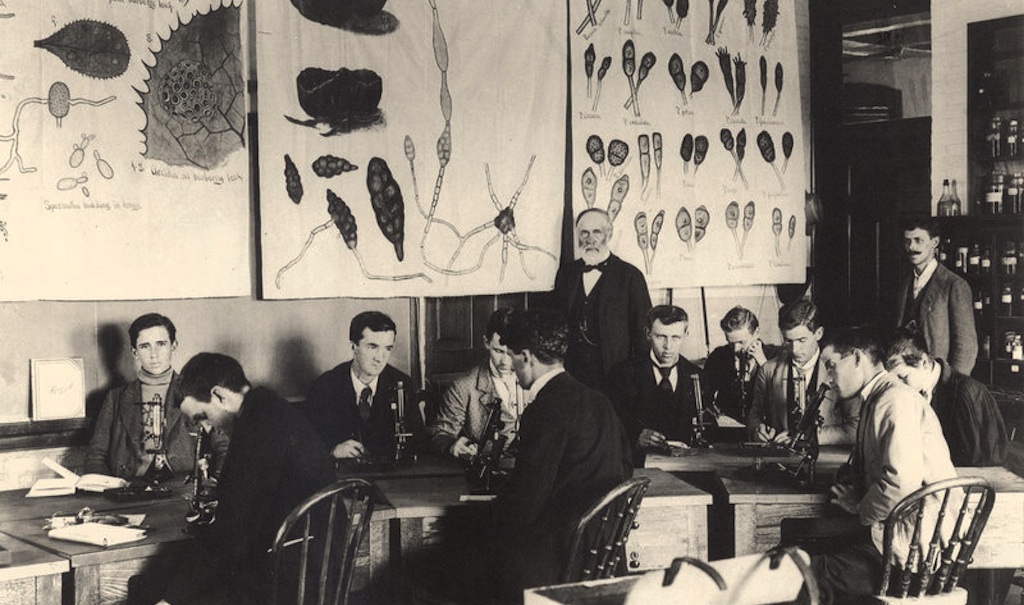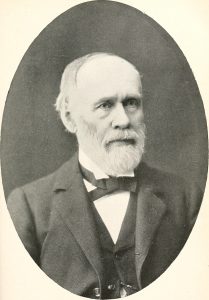When Sir Isaac Newton said “If I have seen further it is by standing on the shoulders of Giants.” he was referring to how science builds on knowledge and discoveries of previous works.
In horticulture this is very true – today’s flirtation with horticulture’s no-dig methodology goes back to proponents from the 1940s who based their methods in large part on Parisian market gardeners from the late 1800s.
Longevity of Seeds Study
I’ve been reading about a scientific study into the longevity of seeds that goes back to 1879. The amazing thing is that the same experiment is still going on!
Back in 1879 Britain was busy fighting the Zulu in Africa whilst suffering the wettest summer in England and Wales since 1766 and Blackpool’s famous illuminations were lit for the first time. In England Sir Charles Darwin was busily researching worms in preparation for his work The Formation of Vegetable Mould Through the Action of Worms
Over on the other side of the Atlantic, at Michigan State University, Professor William James Beal, who developed hybrid corn thereby much improving yields, decided to find out
The length of time the seeds of some of our most common plants would remain dormant in the soil yet germinate when exposed to favourable conditions.
Thus began one of the longest experiments in science. He published about his study in the Botanical Gazette in 1905. See Beal, W. J. “The Vitality of Seeds.” Botanical Gazette, vol. 40, no. 2, 1905, pp. 140–143.
The Experiment
His experiment was simple in concept. Take a set of 50 seeds each from 23 plants, mix with moist sand as found 3 feet below the surface and place in bottles. Bury the bottles and then dig one up every so often and see what could be germinated.
Still Running!
The 1905 report wasn’t the end of the experiment. Professor Beal died in 1924 at the age of 91 but his study is still running today.
The First Century
During the first 40 years of the experiment, germination tests were performed every five years. Dr. Darlington, took over the experiment from Professor Beal in 1915 and decided to extend the period between germination tests to every ten years in 1920. This frequency was observed until the centennial year of the study in 1980.
Into the next century
Dr. Darlington retired and the study was taken on by Dr. Bandursky who decided to extend the period between germination trials to 20 years. The 15th bottle was unearthed in April 2000 by Drs. Frank W. Telewski and Jan Zeevaart, 120 years after the bottles were first buried by Professor Beal.
An observation on germination
When Professor Beal reported on his results in 1905 he had deduced
It is to the advantage of the plants not to shoot up all of their seeds at one time, but to retain a good portion alive in the soil to be ready for stocking the earth in successive years. Again, we must consider that it makes very little difference whether all the seeds live over for a time or only a small proportion of those which were produced, as a living seed now and then left is enough to save the stock and produce new crops of seeds.
So obvious when pointed out!
2000 and the next 100 years
In 2000 a bottle was dug up and the contents tested. Only a couple of species germinated but considering the seeds have been stored under less than ideal conditions for 120 years, any germination is awe inspiring. It doesn’t bode well for gardeners knowing that ‘one year’s seeding brings seven years weeding‘ is wrong.. it could be 120 years! Or more.
In 2002 Frank W Telewski and Jan A D Zeevaart published in the American Journal of Botany – The 120‐yr period for Dr. Beal’s seed viability experiment
The latest retrieval was this year as the pandemic delayed things and so far one seed has germinated. It is feasible that a species that didn’t germinate in 2000 or 2021 might surprise and sprout so continuing the study is well worth it.
Professor Frank Telewski has now appointed three researchers to continue the study as he is ageing himself. The study is scheduled to run until 2100.






The oldest mature seed that has grown into a viable plant was a Judean date palm seed about 2,000 years old
Actually, it seems that the oldest seed to germinate seeds were 32,000 years old!!!
https://www.nationalgeographic.com/science/article/120221-oldest-seeds-regenerated-plants-science
About a month ago I thought spring had arrived here in Vermont, USA. The temperature was in the 60s (about 15 C), and it “smelled” like spring. So I planted five large containers with trailing nasturtiums. ..Silly woman! Since then we have had below freezing temperatures and snow. Even though I covered the containers, nary a sprout has appeared. Are the seeds dormant or dead? How can I tell? Should I replant, or will they still germinate? Any advice will be appreciated. Thank you
I found an unopened packet of russel lupin seeds packed in 1996 earlier this year.
Sowed 5 & all germinated, so I sowed the rest & in total, 27 out of 29 have become plants.
None of the other 30 odd packets of seeds in the same box have produced anything in a limited test of about 10 seeds each.
I’ll sow the lot next year & see if anything comes of it.